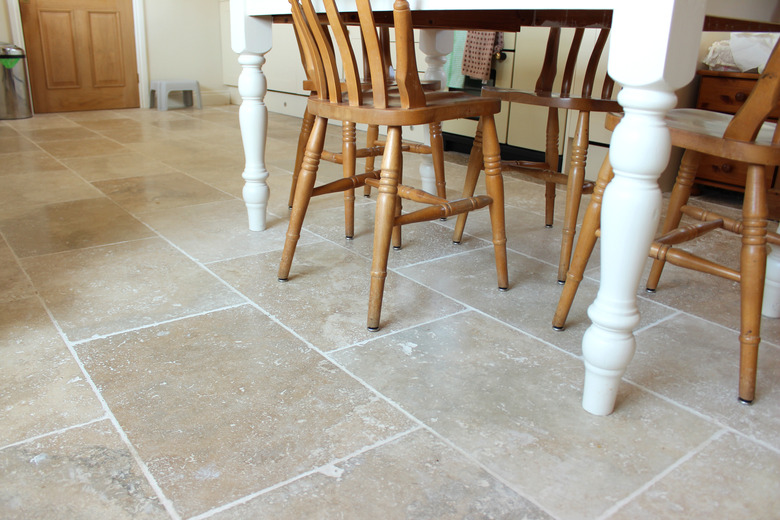How To Remove Mildew From Travertine Tile
It's the porous terrain that makes travertine so popular. The ridges, pock marks and divots add a rich texture to design elements. Because of this, porous bumps and holes also can create a cleaning issue for travertine tile owners. Travertine tends to attract more dust and grime and can pick up stains from spills, holding them tight if they aren't cleaned up quickly. Cleaning travertine often will keep it in good condition and lovely to look at for decades.
Travertine Tile Stain Removal
Travertine Tile Stain Removal
Travertine tile stain removal requires a bit more work. Mildew can get into the nooks and crannies of the travertine tile, staining it and the surrounding grout. The natural hills and valleys of the travertine stone attract the moisture that collects in showers, which can lead to more mildew issues than sealed and flat surfaced tiles, such as ceramic or porcelain.
Best Grout for Travertine Tiles
Best Grout for Travertine Tiles
The beauty of travertine is that the rich colors vary so widely that it is easier to match grout without having to deal with messy stains or dyes. The best grout for travertine that is 1/8 of an inch wide at the joints is unsanded grout. The small spaces allow the unsanded grout to cling to the vertical surfaces of each tile tightly. Unsanded grout has a smooth texture and is just as easy to work with as sanded grout.
For travertine tile, installations with joints that are wider than 1/8 of an inch, sanded grout should be used. The sand in the grout can prevent shrinkage and cracking of the mortar around the thin vertical walls of the travertine tiles. If the incorrect grout is used, then it can cause serious damage. The heavy travertine tiles may fall from the wall moorings or slip from the position on the floor where they were originally installed.
Cleaners to Use
Cleaners to Use
Travertine tiles are durable, but it is also a delicate material. It is susceptible to damage from acid-based cleaners. An alkaline cleaning agent has a strong base of sodium hydroxide or potassium hydroxide. These include bleach and ammonia. These should be diluted before being applied to the travertine tiles in the shower. Commercial alkaline cleaners contain a wetting agent, alkaline salts and chelating agents. These additions help to lift and remove dirt and stains.
Cleaning Mildew from Travertine Tiles
Cleaning Mildew from Travertine Tiles
Cleaning a travertine shower of mildew will need an all-purpose alkaline-based cleaner, which is 1-part baking soda to 4 parts borax added to 8 parts of water. Put in a spray bottle and soak the shower walls and travertine tile flooring thoroughly. Allow it to sit for 15 minutes before rinsing. Repeat on areas that have a build-up of mold or mildew or stains from soap residue. Allow the cleaner to sit on stains for up to 30 minutes. Take a toothbrush to grout and give a good scrub to any area that may have been discolored by mildew that was allowed to sit on the porous surface of the tile or grout. Once the area is completely rinsed, rub it down with a soft cloth to remove any haze from the cleaner that can cling to travertine.
Prevent Future Mildew
Prevent Future Mildew
The room should be well ventilated after the shower has been used to prevent mildew from sprouting. If the travertine tiles or pavers have not been sealed, mildew will more than likely return. Sealing travertine tile in a shower can be tricky. To seal the tiles in a moist area, use a travertine-specific sealant over the tiles, making sure to include the grout. The tiles need to be covered thoroughly if using a sealant. If any water gets under the porous travertine tiles, it won't have a way to escape and will soak the underside of the tiles.
